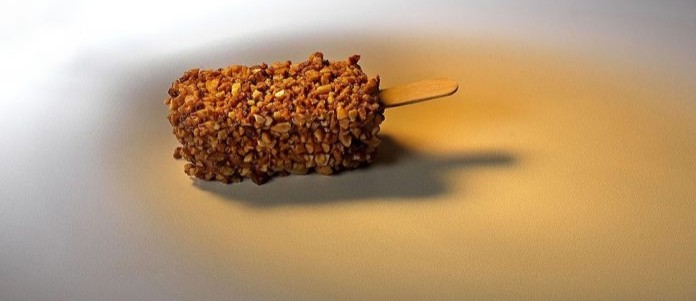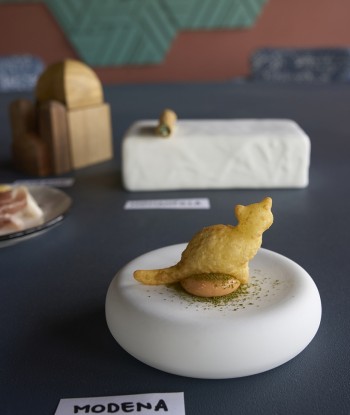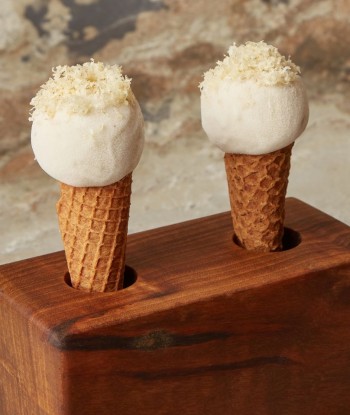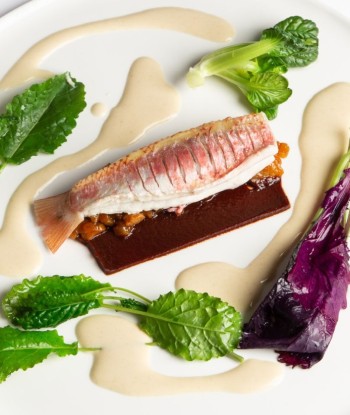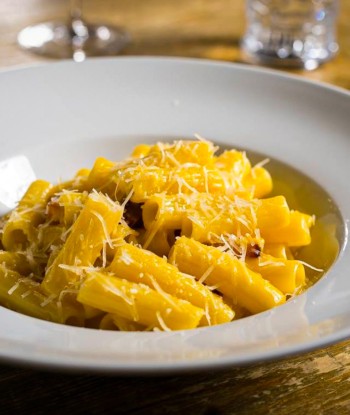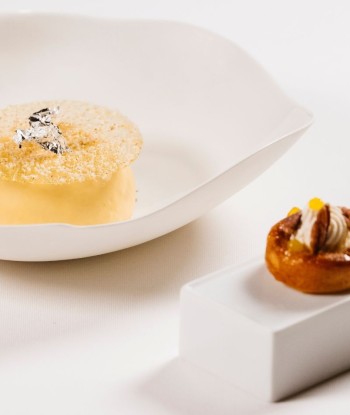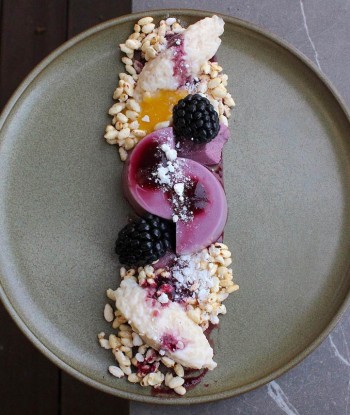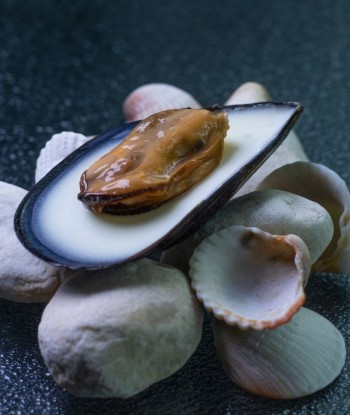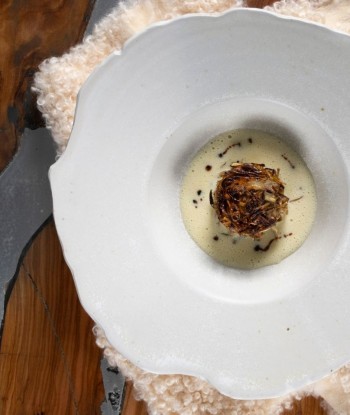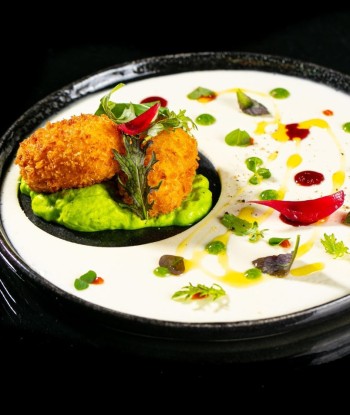Recipe by Massimo Bottura: Foie Gras Crunch
Ingredients for two servings
- 400g of duck foie gras
- 10g of cloves
- 30g of bitter sweet Noto almonds
- 30g of hazelnuts
- 50g of sugar
- 9 cl of 30-year-old aged calvados
- 2 cl of water
- 1 cinnamon stick
- 1/2 vanilla bean
- Zest of half an orange
- Extra-aged Traditional Balsamic Vinegar from Modena
- Fleur de sel (sea salt)
Method
Clean the foie gras by gently separating the lobes and removing the connective tissue from the larger veins without damaging the meat. Marinate it with calvados and spices for 6 hours.
Drain and remove from the marinade. Place it in a container, then vacuum-seal the container and cook it in a Roner (sous-vide cooker) for about 35 minutes at 55°C (131°F).
Remove from the Roner and cool in a blast chiller until it reaches 2° Celsius (35.6°F). Allow it to rest in the refrigerator for at least two days.
Bring water to a boil with sugar, vanilla, and orange zest. Dip the almonds and hazelnuts in the syrup, drain them, place them on a silpat (silicone baking mat), and sprinkle them with fleur de sel. Bake them until they crystallize properly (200°C or 392°F for a few minutes).
Using the hot blade of a knife, cut two parallelepipeds, each about 8 centimeters in length, 4 centimeters in width, and 1.5 centimeters in height, from the foie gras terrine.
Apply pressure to cover all six sides of the foie gras with the sweet&salty almonds after adding balsamic vinegar inside the terrine, using a skewer to help. Finally, insert the ice cream stick on the opposite side.
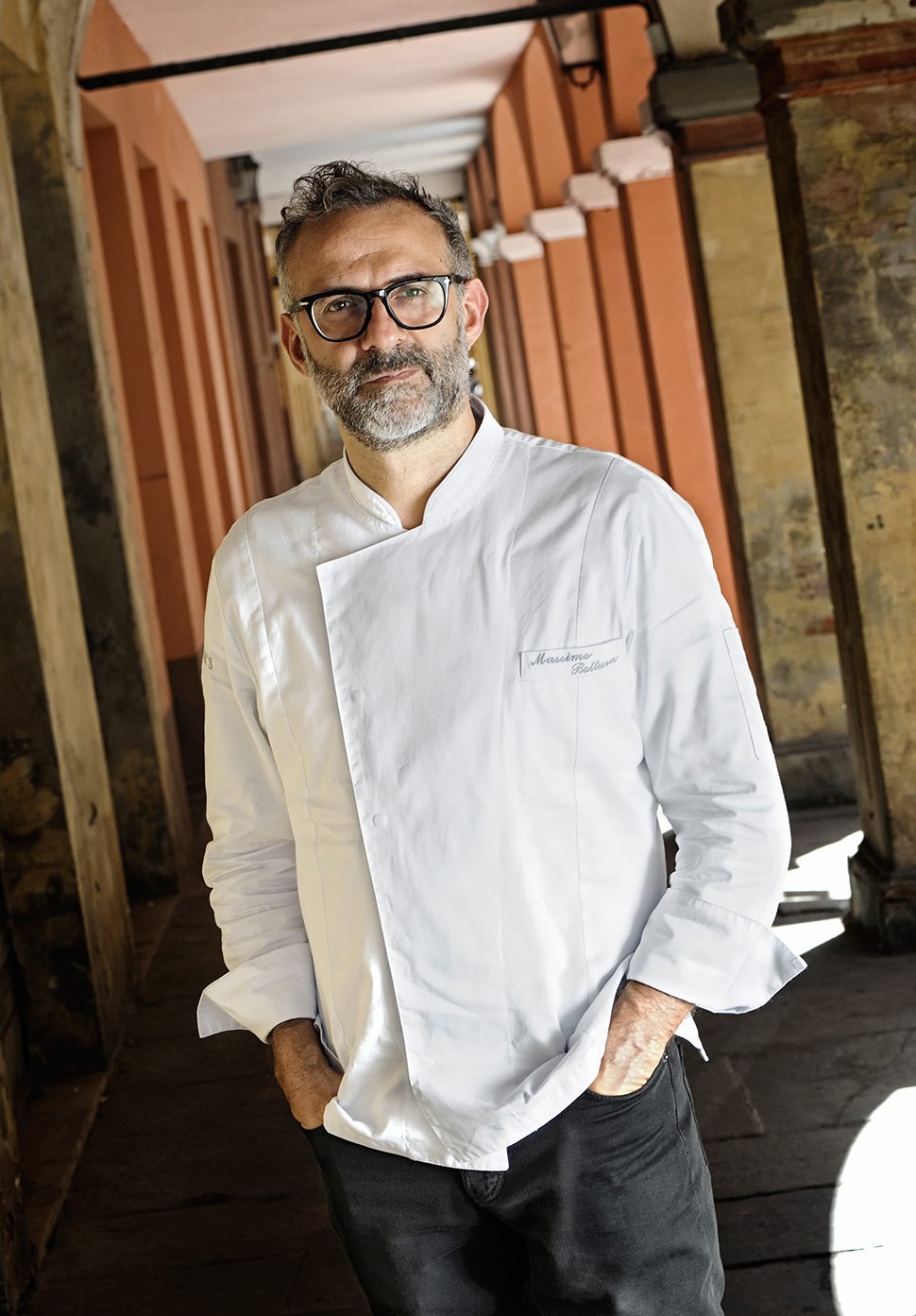 The photograph of the dish is by Sergio Coimbra.
The photograph of the dish is by Sergio Coimbra.
The photograph of Massimo Bottura is by Paolo Terzi.


